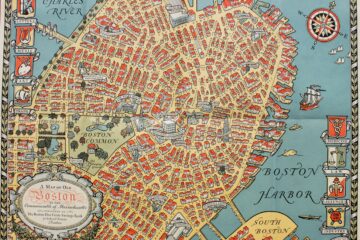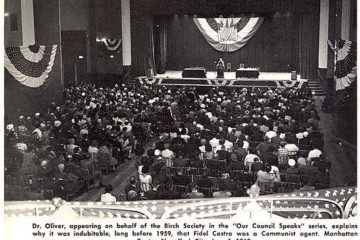Spalding Gray’s Suicide
Viewed from the perspective of The Dispossessed Majority
by John I. Johnson
BIPOLAR SELF-ABSORBED dyslexic high-IQ depressed WASP actor Spalding Gray (pictured; 1941-2004) committed suicide in the freezing cold of January 2004 by jumping into the East River from the Staten Island Ferry. The identity of the corpse, found in the river the next Sunday, March 7, was confirmed the following day. It’s true that physical injuries suffered in a near-fatal 2001 automobile accident on a treacherous, narrow lane in rural Ireland triggered his devastating final depression, but it’s also true that Spalding Gray was badly mixed up long before the occurrence of that tragic event.
Gray was typecast in mostly unmemorable WASP roles in some 40 motion pictures (in 2001 he appeared with rappers Method Man and Redman in How High, a comedy about two Negroes who, after being accepted at Harvard, turn the campus upside down), but was also a stage actor. On stage from the mid-1960s, he co-founded New York City’s avant-garde Wooster Group, which included a young Wisconsin-born actor named Willem Dafoe, who also later became famous. In 1968 Gray played a Puritan governor in Robert Lowell’s play The Old Glory: Endecott and the Red Cross; two decades later he had the key part of the Stage Manager in Thornton Wilder’s Our Town, and in 2000 starred as a political candidate in Gore Vidal’s The Best Man.
Gray was most noted, however, as an autobiographical monologist on stage — a medium he essentially invented to suit his talents.
“He almost always appeared seated behind a simple desk, with a glass of water and some notes,” according to the New York Times, performing “in a style that alternated between conspiratorial whispers and antic screams as he roamed through topics large and small.”
This talent was perhaps never better displayed than in Swimming to Cambodia [which made Gray famous], his 1984 monologue in which his experiences playing a small role in the movie The Killing Fields, became a jumping off point for exploring the history and culture of war in Southeast Asia. That monologue was itself turned into a noted film, directed by Jonathan Demme, in 1987.
Swimming may have been Mr. Gray’s most famous work, but for 25 years, he turned out a consistent stream of well-received pieces on subjects as varied as writing (Monster in a Box, 1990) and illness (Gray’s Anatomy, 1993), to less weighty issues like learning to ski (It’s a Slippery Slope, 1996) and performing while high on LSD (Point Judith, 1980).
Born in Barrington, Rhode Island, Spalding Gray was the son of a corporate credit manager and a homemaker. “I was raised as an upper-class WASP in New England,” Gray told PBS, “and there was this old tradition there . . . And it rejected me, I rejected it, and I ended up as a kind of refugee really.” His mother, Elizabeth Gray, committed suicide in 1967 at the age of 52. His older brother, Rockwell Gray, Jr., is an English professor at Washington University in St. Louis; his younger brother, Channing Gray, is music critic for the Providence Journal.
A “cerebral, restless youth,” Gray at first aspired to become a novelist, but subsequently focused on the theater. After leaving Emerson College, Gray tried to break into regional theater in Houston, Texas. “It was horrible,” he later said, claiming: “People would call up the theater and say things like, ‘We want seats tonight, but not next to no Negroes.’” He moved to New York City.
His first wife was Renee Shafransky, a Jewish film critic for the Village Voice. (They were married for 14 years. Today Shafransky is a psychotherapist with practices in Manhattan and Sag Harbor.)
The cultural phenomenon and tragic fate of Spalding Gray irresistibly calls to mind Wilmot Robertson’s analysis of “The Dissolution of Art” in The Dispossessed Majority, first written more than three decades ago: “Today the Jewish American writes of the Jew and his heritage, the Negro American of the Negro, the Italian American of the Italian, and so on. But of whom does the American American, the Majority writer, write? Of Nordics and Anglo-Saxons? If he did, and if he portrayed them as fair-haired heroes, he would be laughed out of modern literature. Consciousness of one’s people, one of the great emotional reserves, one of the great artistic stimulants, is denied the Majority artist at the very moment the minority artist feeds upon it so ravenously. Besides its other psychological handicaps, this one-sided, selective censorship obviously builds a high wall of frustration around the free play of the imagination.”
Gray’s solution was to turn inward, to wallow publicly and unabashedly in intellectualized neuroticism. He was “a man who’s become a living legend by eviscerating himself in public,” one writer said. (Eviscerate: “To remove the entrails of; disembowel, gut. To take away a vital or essential part of; to weaken decisively: devitalize.”)
Robertson continued:
Aware or unaware of the forces working against them, many Majority artists have fled abroad to seek the cultural kinship they miss at home. Eliot became a British citizen, Robert Frost was first discovered and published while living in England. Pound, who probably exercised more influence on modern literature than any other poet, settled down in Rapallo, and dabbled in European right-wing politics. Hemingway moved to France, Italy, Spain, Africa, Cuba, and eventually committed suicide. Thomas Wolfe and F. Scott Fitzgerald spent many of their most creative years abroad and returned to gypsy-like, coast-to-coast peregrinations and an early death that was either helped along or brought about by alcohol poisoning.
Some majority artists tried to escape the dilemma of deracination by a form of spiritual emigration. [“I knew I couldn’t live in America and I wasn’t ready to move to Europe so I moved to an island off the coast of America — New York City,” Gray told PBS.] Poet Robert Lowell, of the Boston Lowells, became a Roman Catholic convert. Others took more desperate measures. Hart Crane, a poet of promise, jumped off a ship and drowned in the Caribbean. Ross Lockridge, Jr. wrote an excellent first novel, Raintree County, then shut his garage door, got in his car, and started the engine. Thomas Heggen, another young author who learned the hollowness of success in an alien society, wrote Mister Roberts and then took an overdose of sleeping pills in a rented New York apartment. F. O. Matthiesen, one of the most brilliant modern American literary critics, heard the siren wail of communism and leapt to his death from a Boston hotel room. W. J. Cash, a Carolina-born essayist with a fine intelligence, lambasted his native South to the delight of liberal critics and shortly afterward was found hanging by his necktie in the bathroom of a hotel in Mexico City. Other talented Majority writers retreat to the sterilities and barbarities of college campuses where they avoid the problem of content by concentrating on form, in a hopeless attempt to separate the inseparable.
All Majority artists necessarily experience the wrenching depression that comes from enforced cultural homelessness. Less than any other person is the artist capable of working in a vacuum. Prevented from exercising his own “peoplehood,” the Majority artist looks for substitutes in minority racism, in exotic religions and Oriental cults, in harebrained exploits of civil disobedience, in African and pre-Columbian art, psychoanalysis, narcotics, and homosexuality.
Alex Williams observed: “From any performer, the intimacy of the confessions during his pieces — masturbation, infidelity — would seem unsettling. From a man who looked like a headmaster at Andover, they were extraordinary, and Gray loved the disconnect. ‘I may look like an American Waspy doctor or lawyer,’ he told an interviewer in 1999, ‘but I feel just like Woody Allen. Don’t cast me for my looks — I have a very ironic, existential, crazy Jew in me.’”
“He used to say that making monologues was like the fairy tale Rumpelstiltskin,” Gray’s Jewish ex-wife said, “that he was spinning garbage into gold.”
* * *
Source: Author







What am I to take away from this? That here we have yet another deracinated White who did himself in after a career dancing on the end of his Jewish puppetmaster’s strings?? In culinary parlance, I just ate some mud.
This guy did have a chance to read a few good books to get his head and soul/spirit/whatever you want to call it straight, one that is most appropriate to me is “Who We Are” by William L. Pierce. So no excuses here.
“But of whom does the American American, the Majority writer, write? Of Nordics and Anglo-Saxons? If he did, and if he portrayed them as fair-haired heroes, he would be laughed out of modern literature.” These days, American Americans are written into movies and TV all the time, but without any racial meaning unless it’s one to ridicule whites – in a fun way of course. But Nordic heroes have long prevailed in Hollywood, from John Wayne to the various incarnations of Batman. From roles as serious as Richard Burton’s were – e.g. a Roman tribune in “The Robe”, to as fluff as the foundation of normalcy in Modern Family, Ed O’Neill. The negroid hero is a recent and awkward phenom, unless it’s Richard Pryor.
“Gray was typecast in mostly unmemorable WASP roles in some 40 motion pictures (in 2001 he appeared with rappers Method Man and Redman in How High, a comedy about two Negroes…”
Enough. All engines full-stop. Appearing in movies with NEGRO rappers? Married to a JEW? Then this unimportant actor and his suicide is nothing to lament. The only regrettable thing is that he didn’t off himself in his teens.